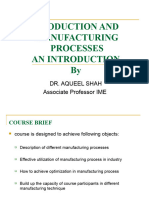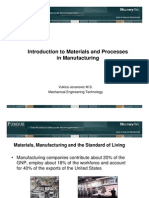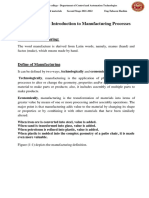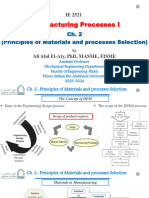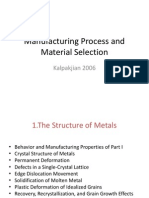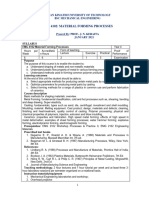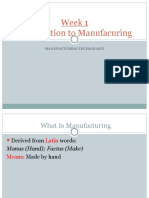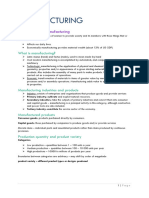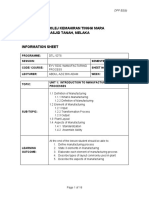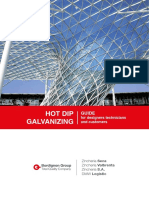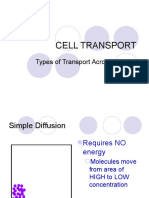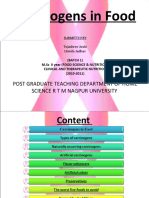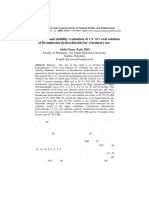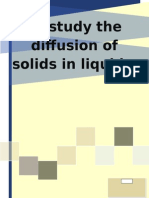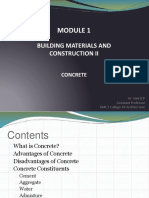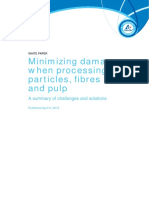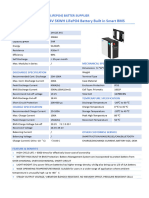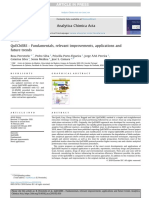0% found this document useful (0 votes)
138 views66 pagesModul 13. Materials Manufacturing Process Design
The document discusses manufacturing processes and their relationship to materials selection and design. It begins with an overview of manufacturing that defines it technologically as applying physical and chemical processes to alter a material's properties, and economically as transforming materials into more valuable products. It then covers the main types of engineering materials - metals, ceramics, polymers, and composites - and how their different properties affect suitable manufacturing methods. The document concludes with an overview of common manufacturing processes and how to select the optimal process based on factors like functional requirements, material properties, cost, quality, and speed to market.
Uploaded by
Alvian HernandesCopyright
© © All Rights Reserved
We take content rights seriously. If you suspect this is your content, claim it here.
Available Formats
Download as PPTX, PDF, TXT or read online on Scribd
0% found this document useful (0 votes)
138 views66 pagesModul 13. Materials Manufacturing Process Design
The document discusses manufacturing processes and their relationship to materials selection and design. It begins with an overview of manufacturing that defines it technologically as applying physical and chemical processes to alter a material's properties, and economically as transforming materials into more valuable products. It then covers the main types of engineering materials - metals, ceramics, polymers, and composites - and how their different properties affect suitable manufacturing methods. The document concludes with an overview of common manufacturing processes and how to select the optimal process based on factors like functional requirements, material properties, cost, quality, and speed to market.
Uploaded by
Alvian HernandesCopyright
© © All Rights Reserved
We take content rights seriously. If you suspect this is your content, claim it here.
Available Formats
Download as PPTX, PDF, TXT or read online on Scribd
/ 66






